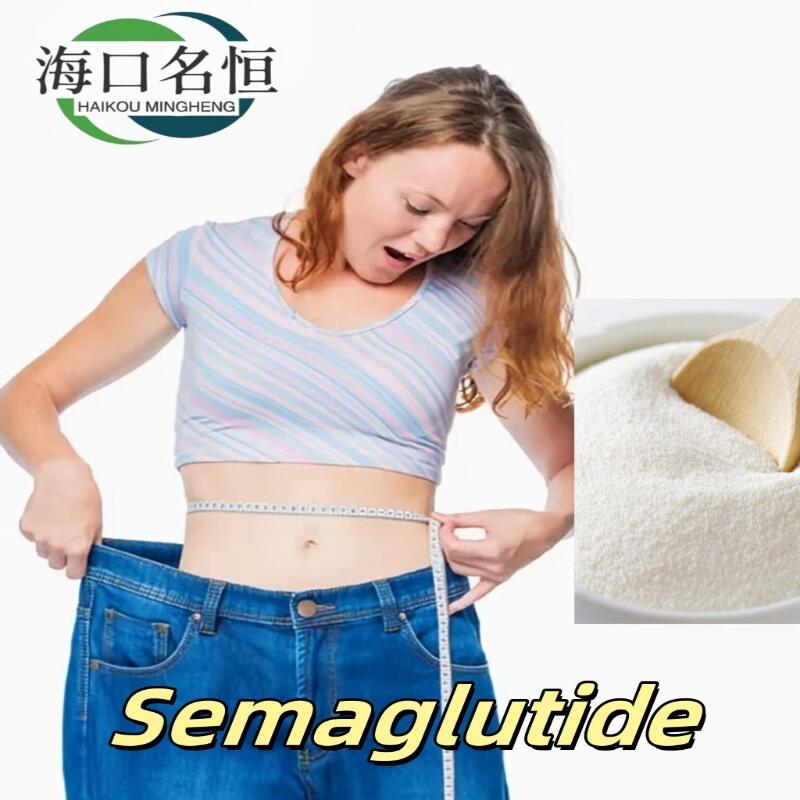PK market of transgenic safety assessment science
-
Last Update: 2011-05-13
-
Source: Internet
-
Author: User
Search more information of high quality chemicals, good prices and reliable suppliers, visit
www.echemi.com
With the latest annual report of international crop biotechnology application service organization (ISAAA) showing that the planting area and planting countries of genetically modified crops are increasing again, the debate around genetically modified crops is heating up again, and the safety assessment and supervision of genetically modified crops have become the focus of all parties Including green and equal anti transgenic organizations, the Chinese government should immediately stop the commercialization process of transgenic rice, further improve the safety evaluation system of transgenic rice, and strengthen the safety research of transgenic rice; while ISAAA believes in its annual report that, despite the exciting progress of transgenic crops in the past, there is an urgent need to establish appropriate Appropriate, cost-effective and time-saving, reliable, rigorous and non trivial regulatory system can make the agricultural biotechnology industry develop healthily, safely and orderly The heated debate between the two sides also makes it necessary to examine the transgenic safety assessment system of major countries in the world Through the research on the regulatory system of the United States, Europe, Japan and China, science news found that in fact, there is no essential difference between countries in the evaluation and regulatory system, and in the scientific conclusion of genetically modified safety, it is also the same; however, different countries have different standards of tightness in the approval of genetically modified industrialization, which has exceeded the scientific evaluation required by the regulatory system, and more reflected A political resolution Us scale The U.S Department of agriculture (USDA), the U.S Food and Drug Administration (FDA) and the U.S Environmental Protection Agency (EPA) are responsible for the management of genetically modified organisms in the United States For the regulatory system of transgenic safety in the United States, please refer to the website 1 of the national Department of biological information infrastructure USDA is mainly responsible for the transportation, operation and treatment of agricultural biotechnology products, environmental release, etc., and its assessment mainly includes the potential risk of plant planting becoming weeds, susceptibility to diseases and pests, expression of gene products, newly generated enzymes, impact on non target organisms, and the possibility of gene transfer to other species Applicants for planting new transgenic varieties need to provide biological principles, experimental data and literature, gene and genetic phenotype of bioengineering organisms, field and laboratory test reports, etc If no harm is found in the assessment, the USDA may license the product for commercial cultivation At the same time, the USDA will also consider public opinions during the evaluation process, and its evaluation documents are open to the public When it comes to genetically modified evaluation, FDA's main responsibility is to ensure the safety of food and feed from genetically engineered plants All foreign substances introduced into food and feed must be approved by FDA before being put on the market The FDA's review policy is based on the Codex Alimentarius guidelines for the use safety evaluation of genetically modified new crops, that is, only when there are differences between the genetically modified derivative food and the traditional non genetically modified equivalent food, can the evaluation be carried out If the protein introduced by transgenic method is the same or similar to the protein used before, it can be considered that the new variety is also safe For example, the FDA, after evaluating genetically modified soybeans that are resistant to glyphosate, roundup, believes that CP4, which has herbicide resistant ingredients, was introduced into soybeans EPSPs enzyme is basically the same as EPSPs enzyme naturally existing in food, and the nutrients and anti nutrients of transgenic and non transgenic soybeans are also similar, so there is no need to carry out toxicological research on transgenic soybeans resistant to Nongda The approval process of FDA mainly requires applicants to organize qualified experts for review, and provide sufficient research literature and test data If there is no safety doubt in the review process, FDA will inform product developers to carry out commercial promotion by themselves Once the applicant is found guilty of fraud, administrative measures will be used to impose heavy penalties on the counterfeiter and recall the approved products In addition to the approval and evaluation, FDA is also responsible for the management of genetically modified food It has not required compulsory labeling of genetically modified products, which is consistent with the attitude of the international Codex Alimentarius Commission For many years, some environmental organizations opposed to genetically modified products have continued to demand, but the international Codex Alimentarius Commission has not included the compulsory labeling of genetically modified products as a world standard EPA also plays an important role in the process of genetically modified registration The original function of EPA is to protect people and the environment from the harm of pesticides At present, the transgenic industries of insect resistance, herbicide resistance and fungicide resistance are also included in its regulatory scope EPA focuses on setting the use limit (MRLs for similar agricultural and chemical products) Taking BT (Bacillus thuringiensis) insecticidal protein transgenic varieties, which are widely used, as an example, after EPA evaluation, it is believed that Bt protein has a high pertinence to target pests and has no impact on mammals Therefore, EPA does not set the upper limit of usage requirements for Bt transgenic crops or BT biopesticides EU and Japan: prudence does not exclude Science In the EU, the EU Food Safety Agency (ESFA) is responsible for the evaluation of the application for planting and importing genetically modified food and feed ESFA organizes research experts from EU countries to set up a special group to evaluate the application types and provide independent scientific opinions However, even if this opinion is positive, it is still necessary for the European Commission and Member States to decide whether to approve commercial cultivation or import through risk management decision-making process Like other countries, ESFA measures the safety of food or feed by comparing potential differences between genetically modified and non genetically modified reference materials In case of unresolved safety questions, additional toxicology tests are required Unlike the United States, ESFA often requires transgenic crop developers to complete 90 day rat feeding trials when applying for import or commercial cultivation, even if there is no substantial difference between transgenic crops and non transgenic crops After years of evaluation, ESFA claimed in a report in 2008 that after summarizing the body weight, feed intake, blood biochemical indicators, tracheal weight and histopathological parameters of rats and mice fed with genetically modified corn, potatoes, rice, soybeans and tomatoes, no clinical effects were found in the organs and tissues of the experimental animals Abnormal sound or histopathology 2 ESFA's transgenic risk assessment reports will be published in full on its website In recent months, the agency has released several safety assessment reports on genetically modified corn, cotton and soybeans In all these reports, the conventional expression of ESFA is that the genetically modified crops submitted are "as safe as the conventional crops similar to them in terms of their impact on human and animal health and environment" The ESFA GMO panel has therefore concluded that the crops submitted are "unlikely to have any negative impact on human and animal health and the environment within the scope of their application" 3 But this does not mean that the EU will definitely approve the application of GM crops or greatly accelerate the process of GM commercialization "ESFA comes to a scientific conclusion, and the approval of GM crops depends on the political will of European governments, who often refuse to approve GM crops because of public opposition or on the grounds that the market does not need them." Wu Yongning, chief scientist of food safety of the Ministry of health and researcher of nutrition and Food Safety Institute of China Center for Disease Control and prevention, said Wu Yongning has long been active on behalf of China in the Codex Alimentarius Commission The evaluation of genetically modified food in Japan is mainly conducted by the food safety committee established by the Ministry of health, labor and welfare, which also evaluates the safety of new genetically modified food according to the international food code In the specific evaluation process, the food safety committee mainly evaluates the safety of the introduced protein, including the basic biological characteristics, potential allergenicity, toxicology research of the introduced protein, and the changes of the protein in the food processing process China: stricter safety assessment China, as one of the important countries of transgenic research and application, has also established a set of rules and regulations in transgenic evaluation Lin min, director of the Institute of biotechnology, Chinese Academy of Agricultural Sciences and Luo Yunbo, Dean of the school of food science, Agricultural University of China, who is engaged in food safety research, and other experts said that China's GM safety assessment drew on the practices of Europe and the United States, or even more stringent In 2001, the State Council promulgated the regulations on the safety management of agricultural genetically modified organisms Then in 2002, the Ministry of agriculture formulated the administrative measures for the safety evaluation of agricultural genetically modified organisms, while the Ministry of health formulated the administrative measures for the health of genetically modified foods The evaluation of genetically modified food in China includes nutrition evaluation, antinutritional factor evaluation, toxicology evaluation and allergy evaluation In the above regulations of the Ministry of health, these indicators are refined into the name of genetically modified food (species); the physical and chemical characteristics and use of genetically modified food; possible food processing methods, end product types and main food ingredients of genetically modified food; the purpose and expected technical effect of gene modification; the name, characteristics and edible history of gene donors; the site of gene insertion and Characteristics; the name, characteristics, function and content of the product expressed by the introduced gene; known or suspected sensitization and toxicity of the product Professor Huang Kunlun, vice president of the school of food science and nutrition engineering, China Agricultural University, pointed out that transgenic rice and maize, which have issued biosafety certificates in China, have conducted toxicological detection and evaluation of foreign gene expression products and transgenic whole foods The experimental data showed that eating the transgenic rice, maize and non transgenic control had no toxicological safety risk According to media reports, some people who oppose transgenic rice believe that the safety test of transgenic rice with safety certificate in China is unscientific They pointed out that "one time feeding of Bt protein to mice for seven days" could not replace the animal experiment of "feeding Bt protein to mice for several days every day" In response, Peng Shuangqing, director of the toxicology evaluation research center of the Institute of disease control and prevention of the Academy of Military Medical Sciences, explained that "one-time observation of mice by gavage for seven days" is only an acute toxicity test in the transgenic safety test In order to pass the safety evaluation, bioinformatics analysis of protein expression, product composition analysis and rat feeding test are also required, as well as China's transformation The safety evaluation of gene food includes these aspects "Existing toxicological tests do not prove that these genetically modified foods are harmful to health." Peng Shuangqing told Science News According to Wu Yongning, the toxicological tests required by China's transgenic evaluation not only require "one-time feeding of mice to observe Bt protein for seven days", but also require long-term use of transgenic plants
This article is an English version of an article which is originally in the Chinese language on echemi.com and is provided for information purposes only.
This website makes no representation or warranty of any kind, either expressed or implied, as to the accuracy, completeness ownership or reliability of
the article or any translations thereof. If you have any concerns or complaints relating to the article, please send an email, providing a detailed
description of the concern or complaint, to
service@echemi.com. A staff member will contact you within 5 working days. Once verified, infringing content
will be removed immediately.







